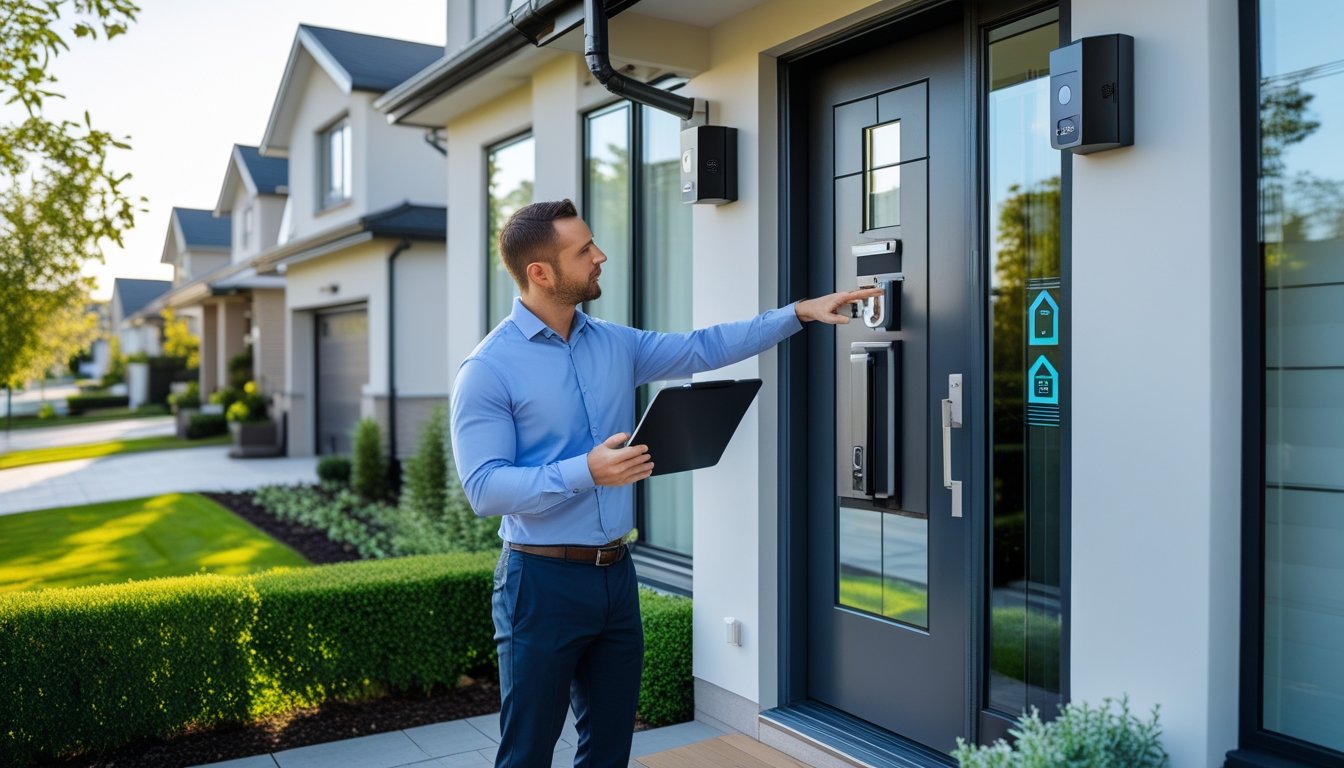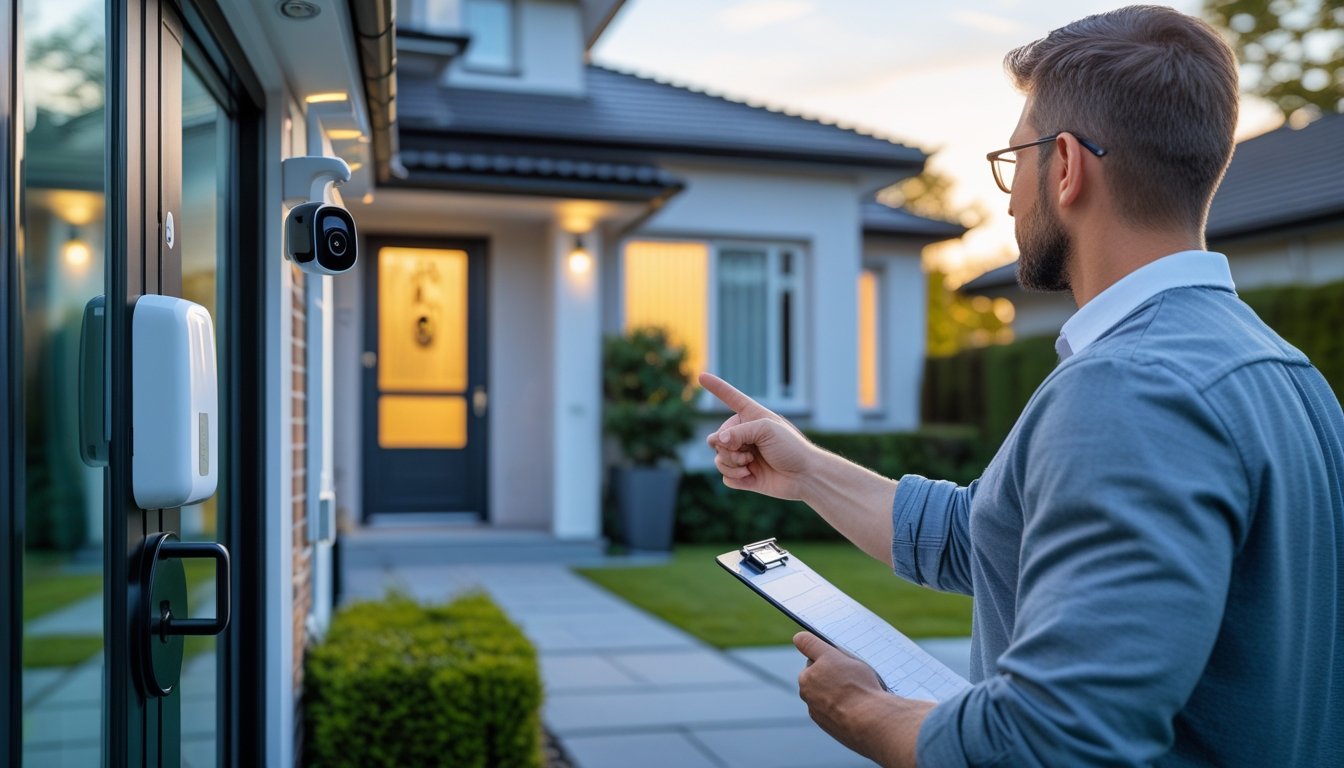Late updated: 20 Aug 2025 09:08
Written by: Elena Prescott
Understanding Home Security Assessments: A Comprehensive Guide
In today's world, securing our homes is more important than ever. A home security assessment is a critical step in identifying potential weaknesses in our security systems and implementing effective measures to address them. By understanding the essential elements of a security assessment, we can significantly enhance the safety of our living spaces and protect our loved ones.

Our approach involves evaluating various factors, including physical devices and strategies that play a role in fortifying a home. Conducting a thorough assessment helps pinpoint vulnerabilities and provides the foundation for a strong security plan. With straightforward steps, anyone can learn to evaluate their home's security needs, even though the task might initially seem daunting.
Interest may vary, but everyone can benefit from knowing their home is secure. Some might focus on evaluating entry points, while others consider the latest technology in security alarms. Whatever the focus, performing regular assessments ensures we stay informed about the best ways to safeguard our properties against evolving threats.
Key Takeaways
- Home security assessments identify vulnerabilities.
- Essential elements guide the evaluation process.
- Regular assessments help maintain security.
Core Elements of Home Security Assessment

In assessing home security, we focus on identifying vulnerabilities, considering physical security, and integrating technology. Each of these areas plays a critical role in protecting our homes from potential threats.
Key Objectives and Benefits
Our primary objectives in a home security assessment are to pinpoint vulnerabilities and strengthen defences against intruders. By thoroughly examining the home's security, we can make informed decisions about the necessity of improvements.
Benefits of this process include peace of mind for homeowners and enhanced protection for property and loved ones. A strong security system can deter potential criminals and minimise risks. Implementing tailored solutions based on the assessment's findings ensures optimal safety measures are in place.
Identifying Security Risks and Vulnerabilities
The first step in our assessment involves identifying potential security risks. This includes examining entry points such as doors and windows and evaluating existing security measures, like locks and alarm systems.
We look at both external and internal factors that may compromise security. For example, poor lighting outside may offer cover for intruders, while inside, valuable items in plain sight could attract theft. By recognising these vulnerabilities, we can prioritise necessary actions to improve safety.
Physical Security Measures
Physical security forms the backbone of any home protection plan. We assess elements like door locks, window reinforcements, and barriers. Ensuring robust door locks and durable windows helps prevent unauthorised entries.
Considerations include upgrading to solid core doors and fortified frames. We also look into installing fences and gates, which serve as physical obstacles. Landscaping can play a role too, such as trimming hedges that offer cover to intruders. Physical barriers not only protect but also act as deterrents.
Technology and Security Systems
Incorporating technology into our security strategy enhances our capability to guard our homes. Modern alarm systems offer immediate alerts and connect to monitoring services. These systems can be tailored to specific needs and integrated with smartphone apps for convenience.
We explore various technologies such as CCTV cameras and motion detectors. Cameras provide real-time monitoring and act as a deterrent to potential intruders. Smart home technologies allow control over locks and lights, enhancing flexibility and responsiveness in our security approach.
Step-by-Step Guide: Conducting a Home Security Assessment
Conducting a home security assessment is essential for understanding the current state of our home’s defences. By checking vulnerabilities and implementing strategic improvements, we can protect our home against unwelcome intrusions and be prepared for emergencies.
Creating a Home Security Checklist
A home security checklist serves as the foundation of our assessment. First, we list key areas such as doors, windows, and perimeter boundaries. Each point should include specific elements like locks, alarms, and lighting.
Importantly, we also account for landscaping and surrounding structures, as these may provide concealment for intruders. Evaluating our checklist systematically ensures that no aspect is overlooked, and it provides a reference for future assessments. This structured approach helps us methodically address each vulnerability, enhancing our home's security step by step.
Evaluating Entry Points and Locks
Entry points, particularly doors and windows, are common targets for intrusions. We need to ensure all locks are sturdy and in good working order. Consider deadbolts for doors and reinforced locks for windows; these can offer better security.
Furthermore, we should check for additional features like peepholes, security bars, and strike plates. It’s essential to review the overall condition of our entry points, addressing any signs of wear and tear. By strengthening these areas, we improve our defence against potential break-ins significantly.
Assessing Alarm Systems and Emergency Preparedness
Alarm systems play a crucial role in detecting and deterring crime. We must first ensure our alarm system is functional and configured correctly. Key aspects to review include sensor placement, monitoring capabilities, and battery backups.
Beyond alarms, preparing an emergency response plan is vital. We should establish procedures for different emergencies, whether fire, intrusion, or natural disasters. It's crucial to include regular drills to ensure our family is ready to act efficiently in a real emergency. This dual focus on deterrent systems and preparedness enhances our peace of mind and safety.
Frequently Asked Questions

Home security assessments are crucial for identifying vulnerabilities and ensuring the safety of your property. This section addresses common queries about key components, frequency, findings, and preparation.
What are the key components of a comprehensive home security assessment?
A thorough assessment includes evaluating physical barriers like doors, windows, and locks. It also examines security systems, such as alarms and surveillance cameras. Additionally, situational strategies are assessed to identify potential external threats and required safety measures.
How often should a home security assessment be conducted to ensure maximum safety?
Conducting an assessment annually helps maintain optimal security. Changes in the environment or recent incidents could prompt additional evaluations. Regular check-ups ensure that any vulnerabilities are addressed promptly.
What common vulnerabilities are typically identified during a home security evaluation?
Evaluations often uncover deficiencies like outdated locks, insufficient lighting, or blind spots in surveillance coverage. Weaknesses in alarm systems and inadequate landscaping can also present security risks.
In what ways can the findings of a home security assessment inform improvement strategies?
The assessment results guide the selection of better security equipment and strategies. Improvements could involve upgrading surveillance systems, reinforcing entry points, or enhancing external lighting. Tailored advice ensures each home receives a targeted approach.
How do professional assessors determine the level of risk associated with different areas of a property?
Assessors use criteria such as previous incidents, crime rates in the area, and the visibility of entry points. They consider how easily a potential intruder could exploit weaknesses. This comprehensive approach enables them to prioritise areas for improvement.
What steps can homeowners take to prepare for a professional home security assessment?
Homeowners should document existing security features and any recent upgrades. It's beneficial to be aware of any past security issues. Reflecting on daily routines can help identify potential vulnerabilities before the assessor arrives, leading to a more thorough evaluation.
